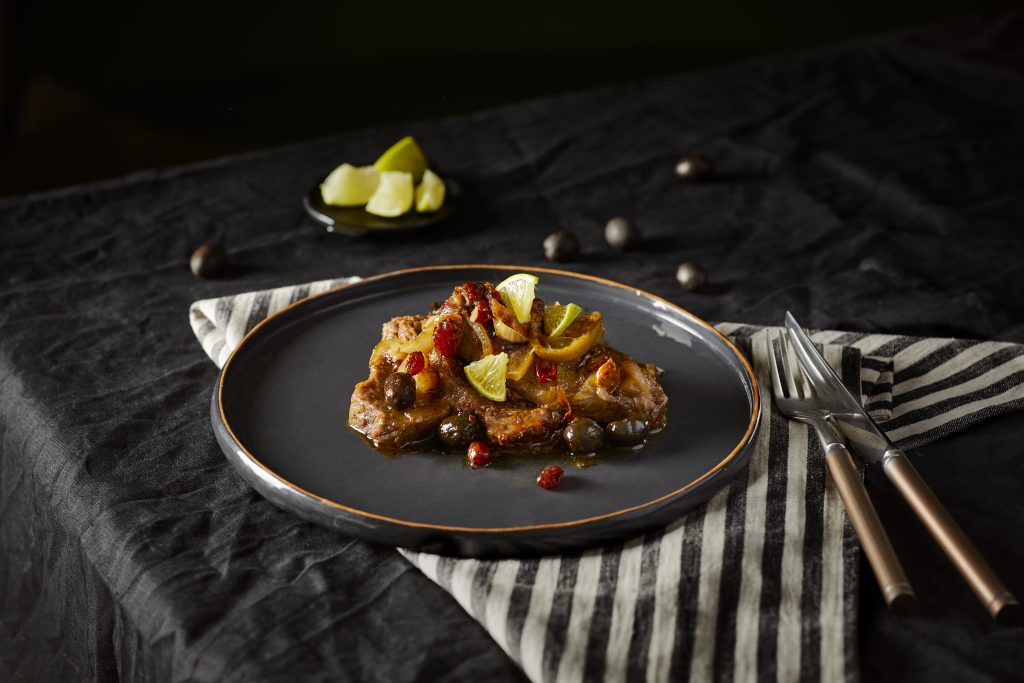The tell-tale sign of the high Baroque cuisine of the Polish-Lithuanian Commonwealth was sweet-and-sour flavour, spiciness, and an abundance of overseas spices.

These spices and flavours gave the nobles of that time an opportunity to demonstrate their financial position. Bigos consists of chopped meat that is boiled or roasted and then stewed. The wine used to make this dish is not known. In the 17th century, culinary literature was put together by professional chefs and was meant for other professional chefs, so quite a few details are missing in the original recipes.
You will need:
- 1 kg fatty beef, without bone
- 400 g butter
- 500 g onion, sliced into rings
- 350 ml dry white wine
- 175 ml sweet white wine (preferably from Greek Malvasia grapes)
- 175 ml wine vinegar
- 1 lime
- 1 lemon
- 50 g small raisins
- 50 g large raisins (preferably Sultana)
- 50 g whole black olives
- cloves (whole)
- 100 g sugar
- black pepper (both ground and whole)
- salt to taste
Method:
- First, roast the beef in the oven: place the entire piece of beef in a pan with half of the butter and cook for 40-50 minutes in an oven preheated to 180-190°C, basting it frequently.
- Cut the roasted meat into thick slices and fry them in butter together with the onions.
- Remove the slices of beef from the skillet and arrange them in an elongated stew pot together with the onions; pour the wine and vinegar on top.
- Slice the lime and finely chop the lemon. Put them in the pot and then immediately add the raisins, olives, cloves, pepper and sugar. Salt and add ground pepper to taste. Slow-cook the stew with the lid off, until just a bit of the liquid is left.
This information was shared by Antanas Astrauskas.
